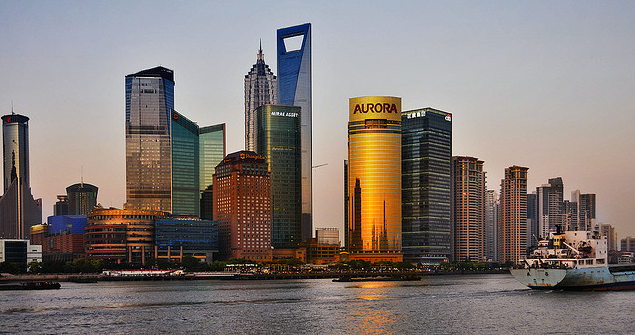The Unremarked Revolution in China

The Chinese economy is more productive, innovative and efficient than is commonly believed.
The Chinese economy, one might think if one took most of the commentary on it seriously, is on a hiding to nowhere good. The growth rate is falling. Manufacturing is suffering from over-capacity. The real estate bubble has burst, or is about to. The opportunity for productive infrastructure investment is running out. If you’re sitting in an economy like Australia, which has been dropping off the edge of the Chinese-driven commodity boom over the past decade or so, there mightn’t seem to be much cheer in the Chinese economic outlook. But China continues to grow at more than twice the rate of the world economy and, at this rate, will almost double its per capita income in the coming decade. So what’s the problem?
The prophets of Chinese economic doom worry about three big problems: the slow global recovery and the negative effects of previous stimulus policies that generated over-investment and capacity; a growth model that no longer attacks the burning problems of the day, such as over-investment and income inequality; and the challenge of steering a way through the middle-income trap by lifting the productivity of an already shrinking labour force. The last two problems are deeply structural and underline the challenge of maintaining higher growth potential (a rate around 7 per cent in the coming few years would be very satisfactory) through lifting productivity, as the supply of cheap labour dries up and the steam runs out of infrastructure investment.
So the real question about Chinese economic performance would seem to have very little to do with maintaining a growth rate that is as high as it used to be, the problem of a lower uptake of labour in the manufacturing sector or a slowdown in infrastructure investment: it has to do with the quality and efficiency with which growth is generated, how Chinese firms are learning to do more with less and how the economy is able to re-structure towards higher productivity jobs across the board and especially in the expanding services sector.
Shanghai’s Mayor, Han Zhen, recently told the Financial Times that his government no longer uses GDP growth as a key performance indicator. ‘When I first became Shanghai mayor five or six years ago, we had a GDP performance review for local county and district chiefs. However, there is only one government department that still cares about the GDP figure, and that is the Bureau of Statistics.’ he said. ‘Do I care about GDP growth figure? Not really. I just need to look it at the end of year’. It’s the ‘quality’ and ‘efficiency’ of growth that matters to Han in a part of China where incomes are already above US$14,500 a head. ‘[That] should be reflected in our contribution to innovation which includes institutional innovation such as the Shanghai Free Trade Zone,’ he said. The governor of the People’s Bank of China, Zhou Xiaochuan, is another senior official who has urged everyone to focus more on innovation and structural reform rather than on GDP growth per se.
How well then is China doing on the innovation front? It’s the effect of innovation on productivity that will ultimately determine whether the Chinese economy grinds to the halt that some predict or triumphs over the middle income trap.
What is little remarked in the commentary on the retreat of the old model of Chinese economic growth is the revolution that is taking place in Chinese corporate innovation in the new model. China is no longer an economy whose industrial growth is based on the absorption of a copious supply of cheap labour in low skilled manufacturing activities with the generous financial backing of the state, if ever it was. China is rapidly becoming a centre of innovative opportunity. It already ranks at the top of the world, alongside the United States and Japan, in terms of the number of patents and the ratio of patents to R&D expenditure. Zhongxing and Huawei are among the world’s top three companies for patent numbers. The internet is revolutionising finance, commerce and publishing.
Private firms are driving leading-edge innovation in manufacturing as well as the emergence of a world class IT driven services economy. Haier whitegoods manufacturer or Alibaba didn’t get to where they are today just by throwing lots of labour and capital together. And while the state may still be messing around in their patch in a way that requires continuous negotiation, there is now clearly space and a capacity in the Chinese political economy that allows intelligence and know-how to find productive expression. There is a fresh edge to management and innovation that could deliver China through the middle income trap at the same time as it effects a revolution in the standing of Chinese corporates on the global stage.
In this week’s lead essay, Yiping Huang points out that despite the difficulties that traditional manufacturing industries face, innovation is emerging as a game-changer in the Chinese economy. ‘The recently US-listed Alibaba is a case in point. Online shopping already accounts for more than 10 per cent of total retail sales and continues to grow at 40 per cent a year. China’s express postal and internet finance services are already world class. Manufacturers of large machinery equipment, electrical machines, cheap mobile phones and other products are rapidly catching up to global leaders’. Zhang Ruimin, the chairman of Haier group, plans to transform Haier into a giant platform for innovation, destroying the traditional corporate structure and turning Haier into an incubator that transforms employees from executors of orders into innovators.
The paradox is that Chinese productivity was on the rise before 2008 and most studies reveal a slowdown in productivity after 2008. All this innovative activity in the private corporate sector in recent times has yet to reveal its impact on China’s aggregate productivity numbers. Important to that outcome, and success in traversing the challenge of the middle income trap, will be entrenching an economic and political environment that encourages creative freedom and investment in the human capital that is its seed — without distracting Mr Zhang of Haier or Mr Ma of Alibaba from doing more with less.
Peter Drysdale is Editor of the East Asia Forum. This article was originally published in The East Asia Forum on 16 February 2015. It is republished with permission.





